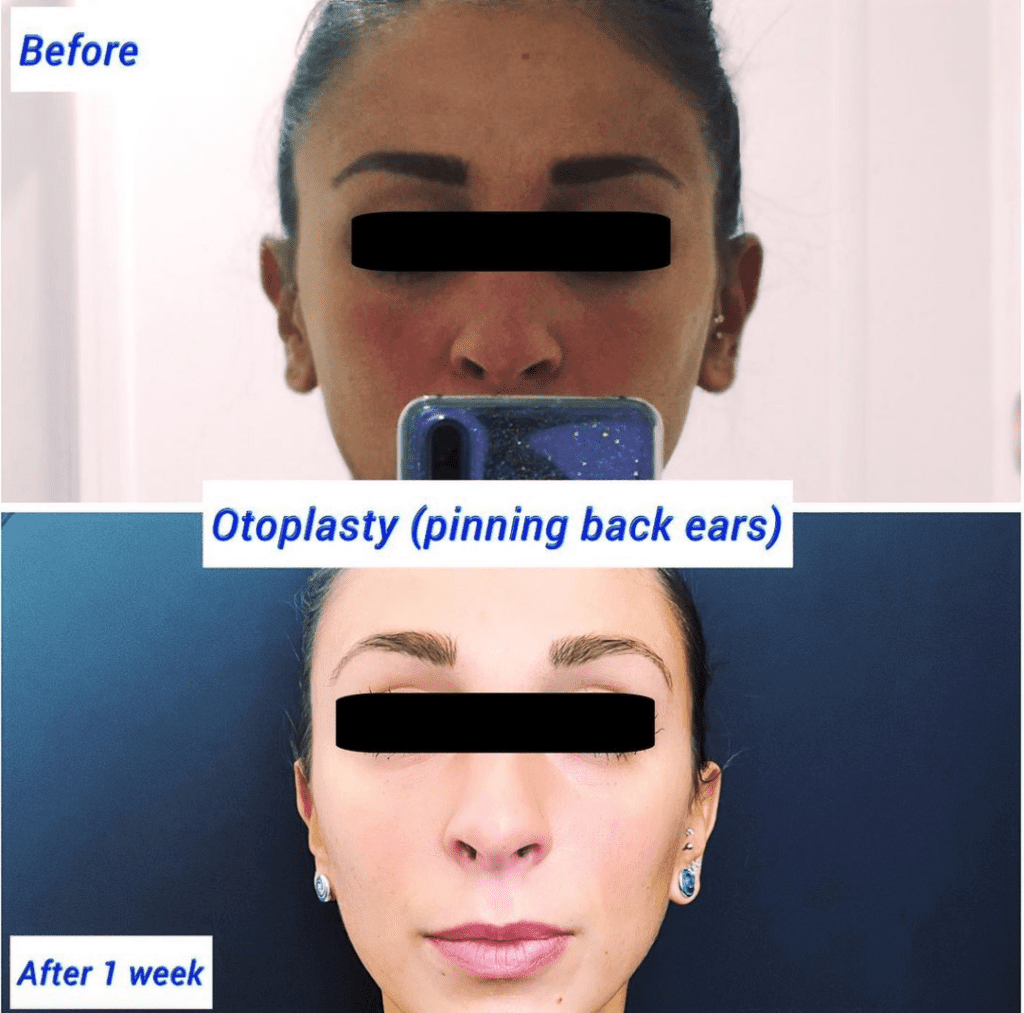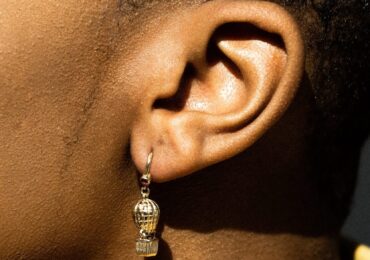Otoplasty or ear correction surgery can alter the size, shape, and position of the ears. From pinning back the ears to fixing a damaged earlobe, ear surgery is a straightforward procedure that can deliver long-lasting results.
What is Ear Correction Surgery?
Large or protruding ears can make you feel self-conscious. Fortunately, ear correction surgery gives people a renewed confidence boost and lasting results. Ear correction surgery is suitable for persons of all ages. It is, however, not recommended for children under the ages of five. This is because their ears are still developing and haven’t fully formed. Depending on your concerns, your surgeon will use specific techniques and incisions to reshape the ears.

Why is Ear Correction Surgery Done?
When a child is born with prominent ears or other ear-shape issues, splinting or ear moulding surgery helps correct such problems. Most people who opt for the surgery to pin back ears experience satisfaction with the final result.
You might want to consider otoplasty if:
- You don’t like how your ears stick out from the head
- Your ears are very large in proportion to the head
- You’ve had ear correction surgery but aren’t happy with the result
- You have deformed or misshapen ears because of a birth defect or injury
Otoplasty is usually done on both ears to optimise their symmetry. It can also help ease ear blowout healing after stretching your ears too drastically. Please note that the procedure doesn’t alter the location of the ears or your hearing ability. The procedure is not always necessary since some ear irregularities resolve without treatment.
What to Expect During Otoplasty
If you opt for ear correction surgery, the plastic surgeon will use different techniques and incisions. Knowing what to expect during the surgery will help you decide on the best procedure.
Splinting or Ear Moulding
This is a safe and simple procedure recommended for infants with ear deformities. The ear cartilage begins stiffening after 6 to 7 weeks. During ear moulding, the surgeon uses a splint to reshape the ear cartilage. The splint supports and keeps the ears in the new position. The splint stays in place for the entire day with regular check-ups from time to time.
Depending on the level of ear deformity, the child may need to wear the splint for a few weeks to a few months. Ear remoulding can only be done within six months after birth. After six months, the ears will have stiffened too much for remoulding. Surgery, in that case, is the only option.
Otoplasty: Surgery to Pin Back Ears
This is surgery to pin back ears performed on both children and adults. The surgeon uses general anaesthetic for children and local anaesthetic for adults. An incision is made behind the ear, and stitches are applied to hold the outer ear back. Sometimes, depending on how severe the damage is, the surgeon may remove some cartilage to make reshaping easy. The surgery takes about an hour to two. A thin scar that fades over time is left at the incision site, usually behind the ear.
Incisionless Ear Correction Surgery
This is ear correction surgery that does not require incisions. Recovery after such a surgery is faster, and the risk of developing complications is also lower. The surgeon places a needle into your cartilage to increase flexibility. Stitches are then used to fix the damage and reshape the ears. The surgery works best for people who only need minor reshaping.
5 Things to Know Before Otoplasty
Otoplasty solely focuses on the ears, but the surgery can deliver dramatic results. This is because the ears play a big role in the overall balance of the face. Whether you’re self-conscious about protruding ears or don’t like the shape of your ears, here are 5 things to know before otoplasty.
1. It’s Never Too Late to Get Otoplasty
Surgery to pin back ears is usually performed on children and young teenagers, but adults can get it too. As long as the ears are fully formed, it’s never too late or too early to get otoplasty. If you find that your ears affect your confidence, it may be worth speaking to a plastic surgeon to see if you are a suitable candidate for the procedure.
2. Ear Blowout Healing: You Can Repair Damaged or Deformed Earlobes
Over time, earlobes can stretch and deform from heavy accessories or injury. Split earlobe correction surgery is a standalone procedure. Earlobes can droop and sag. If you feel that your earlobes are too large or have suffered an injury, ear surgery can help to restore your earlobes. It can also help optimise ear blowout healing. Typically, you can repair earlobes as a standalone procedure or alongside your ear reshaping surgery. So, you do not need to reshape your ears if your main concern is your earlobes.
3. You Will Need 1 Week of Rest and Recovery
How long does a torn earlobe take to heal after repair? Although otoplasty surgery and recovery is relatively straightforward, you need to expect to take about a week off to rest. Most patients take between 5-7 days off work. It is when the most critical healing time occurs. Because ear reshaping alters the actual tissue within the ear, you will see results immediately. While otoplasty recovery is simple, you must follow your surgeon’s aftercare instructions. If you combine ear correction with another procedure like rhinoplasty or facelift, the recovery time will be longer.
4. Otoplasty is one of the Most Requested Cosmetic Procedures
When otoplasty first came to the scene, it had limited availability and was much more expensive. In recent years, it’s become one of the most requested cosmetic procedures as it’s both more readily available and affordable. Otoplasty is one of the most popular cosmetic procedures in the world. If you are concerned about the way your ears or your child’s look, otoplasty can bring back the confidence lost.
5. It’s Usually Performed Under Local Anaesthetic
In general, adults will be put under local anaesthetic for this procedure. Typically, you would be awake for the procedure. A local anaesthetic numbs the area so that the patient won’t feel anything. Children will mostly be put under general anaesthetic instead. For more complex procedures, or if you’re getting your ears reshaped alongside another treatment, your surgeon will speak to you about anaesthetic options.
Like any cosmetic procedure, the more you know about it, the better. Your plastic surgeon is there to guide you, but you still need to feel physically and mentally ready. Are you wondering where you can find affordable otoplasty? For Like any cosmetic procedure, the more you know about it, the better. Your plastic surgeon is there to guide you, but you still need to feel physically and mentally ready. Are you wondering where you can find affordable otoplasty? For more information on otoplasty or to schedule a consultation today, please contact our Harley Street Clinic in London, the Harley Clinic.













